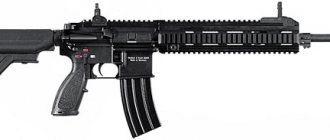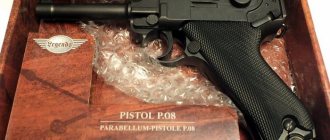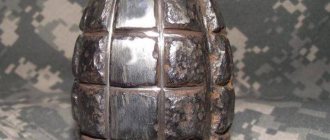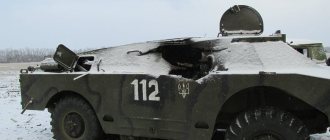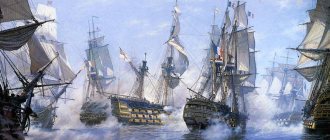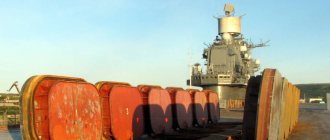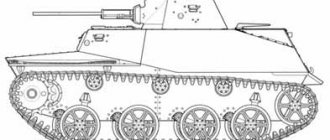The Anglo-Transvaal War in illustrations from the magazine "Niva" " Military Review
If I hadn’t handed it over, I wouldn’t have to go anywhere now, but would sit at home and without any problems take photos from there and read the most interesting articles and reviews. By the way, it was in Niva in 1898 that the novel “Resurrection” by L. Tolstoy was first published, and then “The Island of Doctor Moreau” by H. Wells, and I read all of this at a very early age.
My favorite topic in the 1899 magazine was the Boer War, knowledge of which I gleaned from Louis Boussenard’s novel “Captain Rip-off.” Oh-oh-oh, for some time this was my favorite book, and then it was supplemented with live photos and graphics “from there”. True, the text did not say exactly what was written in the novel, but in principle... the information was not that different. But what kind of illustrations were there? And now many, many years have passed, I read “VO” and write about it myself, and suddenly I come across material here about the Anglo-Boer War. But it’s one thing to read “rehashes” of dozens of authors, and quite another thing to read fresh reports with “yatami”, “fita” and other delights of pre-revolutionary grammar. But the main thing, of course, is the images. Therefore, when I had a free day, I went to the local museum and shot “pictures” for two years - 1899 and 1900. There is no magazine for 1901, and 1902 was “busy” with museum workers. But somehow his turn will come too. So, let's look at the Anglo-Boer War the way the readers of the all-Russian popular and accessible magazine "Niva" looked at it. By the way, it was then called “Anglo-Transvaal”, after the name of the Transvaal Republic.
Combat use
The Lee-Enfield was first tested in the Transvaal; the Boer War affected the rifle's career only with the appearance of the nickname "Boer". Otherwise, this war did not show anything interesting. Due to the peculiarities of the landscape and the combat operations themselves, the weapon did not experience any special stress; it is difficult to call this period of the life of the Lee-Enfield rifle a full-fledged testing.
The SMLE rifle was a reliable and accurate weapon; moreover, the larger magazine capacity compared to its competitors gave British shooters a greater chance of survival.
During the same period of time, the Lee-Enfields also entered Afghanistan; in 1919, Afghan soldiers crossed the border and stormed the city of Bagh. The forces of the British colonial corps and battalions of Gurkhas and sepoys of Indian troops were brought into Afghanistan.
They were armed with SMLE No. 3 rifles, during the battles the British restored justice, dispersed the troops of Nadir Khan, after which a peace agreement was signed in August 1919. True, it is worth noting that the losses of the British and Indians were twice as high as the losses of the Afghans, but over 50% of the losses can be attributed to sanitary losses.
After this conflict, the first Bur-303 rifles appeared in Afghanistan, in addition, some were received from India and Pakistan subsequently; the arms market after the First World War was oversaturated with rifles and machine guns. The cartridges for them were produced in the Royal Arsenal of Afghanistan. There is information about independent reloading of cartridges outside the arsenal.
I have to disappoint the discerning reader. The “Boer” really existed, moreover, some of the Pashtuns really proudly wore this masterpiece of English weapons thought. But one could only dream of an accurate shot a couple of kilometers away or of penetrating the armor of a tank or infantry fighting vehicle.
The ballistic characteristics of the 7.71x56R cartridge are similar to those from the Mosin rifle or SVD. The 7.62x54R cartridge is almost no different in its characteristics from the British one.
With the same success, the German 7.92 mm Mauser cartridge could appear in the role of .303 British; its power, by the way, is slightly higher than that of its British or Russian counterpart. Moreover, standard bullets from the British cartridge were designed to shoot “Papuans” (a lightweight bullet with a light tip); such a cartridge could not penetrate the armor of an armored personnel carrier.
Another conversation is about cartridges with armor-piercing or armor-piercing incendiary bullets, which could well have been produced in Afghanistan. Their characteristics are quite comparable to armor-piercing bullets fired from an SVD sniper rifle and can easily penetrate the armor of light armored vehicles.
There is no point in talking about the characteristics of the “drill” in comparison with special weapons such as VSS or KSVK rifles; they occupy too different niches. It’s difficult to talk about the great masters of sniping, with rifles produced at the beginning of the century, or even using SMLE No. 4, from the 40s of the last century.
With prolonged and intensive use of weapons, even with periodic maintenance, the barrels wear out, and there is no need to talk about any kind of accurate shooting at extreme distances.
According to modern shooting of the Lee Enfield No4.Mk2(F) rifle manufactured in 1954, at 100 meters the hits fell in a circle no more than 14 mm in diameter. But in this case, the shooting was carried out with targeted cartridges and an excellent shooter.
Lee Enfield rifles were officially in service with the British Army until the 50s of the last century. However, the quantity produced (6 million pieces) was more than enough for their use in later conflicts, including the Afghan War of 1979-1989.
Only now she was already shooting at other “shuravi”, fighting on the side of the dushmans. To this day it can be found in local conflicts, although its time, of course, is long gone and irrevocably gone. However, more than a hundred years of history of the use of this rifle speaks of the genius of its inventor. Time flies quickly and most likely, in ten years, Boer will be found, well, perhaps in museums.
Comparative characteristics of various samples
| Sample | No.1 Mk I | No.1 Mk III | No.4 Mk I | No 5 Mk 1 |
| Cartridge: | .303 (7.7×56 mm R) | .303 (7.7×56 mm R) | .303 (7.7×56 mm R) | .303 (7.7×56 mm R) |
| Length, mm: | 1260 | 1132 | 1129 | 1003 |
| Barrel length, mm: | 767 | 640 | 640 | 478 |
| Weight, kg: | 4,19 | 3,96 | 4,11 | 3,24 |
Options and modifications
| Model/Brand | Operating time |
| Magazine Lee-Enfield | 1895—1926 |
| Charger Loading Lee-Enfield | 1906—1926 |
| Short Magazine Lee-Enfield Mk I | 1904—1926 |
| Short Magazine Lee-Enfield Mk II | 1906—1927 |
| Short Magazine Lee-Enfield Mk III/III* | 1907–present |
| Short Magazine Lee-Enfield Mk V | 1923—1926 (Trials Only) |
| Rifle No. 4 Mk I | 1939–present |
| Rifle No. 4 Mk I* | 1941–present |
| Rifle No 5 Mk I "Jungle Carbine" | 1944–present |
| Rifle No. 4 Mk 2 | 1947–present |
| Rifle 7.62mm 2A1 | 1965–present |
AIA M10 is a modernized version chambered for the 7.62x51 mm NATO cartridge with a plastic stock and sighting rib. Used by Canadian Rangers
There were also automatic rifles, converted into light machine guns, designed by Charlton, , , , and Elkins.
Features of the combat use of the Bur grenade launcher
The operation of the product deserves attention. To transport weapons, the fighter is equipped with a “backpack” type bag. The bag uses special fastenings and has a number of compartments for conveniently carrying a grenade launcher, sighting devices and transport and launch containers. A grenade launcher can independently carry a backpack with three TPKs equipped with live grenades at a time.
Special forces soldiers equipped with this type of infantry weapon can freely land and easily move over rough terrain. The complex deploys into combat mode within a matter of seconds. The weapon does not require special skills or outside assistance for use in a combat situation.
ApplicationToday it is known that the Bur small-sized rocket launcher is already in mass production. FSB units, special forces of the National Guard and other law enforcement agencies of Russia are equipped with a new type of grenade launcher. It became known that the Navy Department had acquired a certain number of new type grenade launchers to equip Marine Corps units. It is no secret that the Bur grenade launcher has begun to be equipped with airborne troops.
Operators
Parade of a detachment of “French militia” armed with Lee-Enfield rifles and Bren machine guns
Great Britain Great Britain: adopted by the British Empire, including the dominions and colonies, was in service until the 1950s, when it was replaced by the L1A1 self-loading rifle.
- Canada Canada: in service since 1916, after 1947 transferred to mobilization reserve warehouses, until 2014 was in service with the Canadian Rangers
- Australia Australia
- New Zealand New Zealand
- Ireland Ireland: used during the War of Independence, after which the rifles remained in service with the Irish Army
- Italy Italy: some were obtained during the First World War; At the end of World War II, after the surrender of Italy in the fall of 1943, the rifles were received under the military aid program, they were used in the navy and then transferred to mobilization reserve warehouses. Removed from service in 2005
- Lithuania Lithuania: in 1924, a batch of rifles and ammunition for them was purchased from Italy
- Germany Germany: during the Second World War, captured rifles entered service with auxiliary paramilitary forces: Lee-Enfield No.1 Mk.III - under the name Gewehr 281 (e)
, Lee-Enfield No.3 Mk.I rifles - under the name
Gewehr 282(e)
and Lee-Enfield No.4 Mk.I rifles - under the name
Gewehr 283(e)
. In particular, they were armed with units of the “French police” and a significant part of the personnel of the “Omakaitse” detachments in the occupied territory of Estonia. - France France: During World War II, used by Free French forces. Also used during the Indochina War by members of the French troops in Indochina and were subsequently transferred by the French military command to colonial troops and Vietnamese units.
- India India: After the partition of British India in 1947, British Indian Army rifles entered service with the Indian Army. In 2008, the command of the Indian Army decided to replace the rifles with more modern weapons, but in 2017 they still remained in service.
- Pakistan Pakistan: after the declaration of independence of Pakistan in 1947, rifles entered service with the Pakistan Army
- Israel Israel: a number of rifles were at the disposal of Jewish armed forces in Palestine even before the proclamation of the State of Israel, and they were later used during the War of Independence
- Myanmar Myanmar: After the declaration of independence of Burma in January 1948, Lee-Enfield No.4 rifles remained in service with the army and police. Despite the replacement of these rifles in the active army with HK G.3 assault rifles, the rifles are used for initial shooting training of military personnel and are stored in mobilization reserve warehouses, and are also in service with the police
- Federal Republic of Germany - after the creation of the Bundeswehr, a number of Enfield No.4 Mk.I rifles received under the military assistance program from Great Britain entered service with the Bundeswehr under the name G61
- Nigeria Nigeria: After the declaration of independence of Nigeria in 1960, Mk.4 rifles, previously in service with the colonial police, remained in service with the Nigerian police
In former British colonies, Asia and Africa, Lee-Enfield rifles were used for decades after the end of World War II.
As of early 2011, a significant number of rifles (mostly supplied in the post-World War II period) were still in use by armed paramilitaries in Africa.
The history of the appearance of the Lobaev rifle
In 2009, a new company appeared on the Russian arms market, which began to deal with high-precision small arms. developed and manufactured the SVL rifle, which over the next few months was carefully discussed by gun enthusiasts.
However, in 2010 the company closed, all its employees moved to the United Arab Emirates, where they worked at the TADS enterprise. The reason for the closure of the company was rumored to be a conflict with IzhMash, but there are no official comments on this matter.
Employees of the former Tsar Cannon, working in the UAE, under the leadership of V. Lobaev, created several new types of high-precision weapons. Some of them have already been adopted by the Arab Emirates Army.
In 2013, Lobaev returned to Russia, where he created a new one). Today, the SVL model range includes 6 main models, while the development of new models does not stop.
Notes
- ↑
- as noted in the report of the Estonian headquarters of the partisan movement No. 00643 dated December 3, 1943, “ The Germans began to put together the volunteer paramilitary organization Omakaitse from the first days of the occupation... all members of Omakaitse are armed predominantly with English rifles
” M. I. Semiryaga. Collaborationism. Nature, typology and manifestations during the Second World War. M., ROSSPEN, 2000. pp.837-841 - Martin Windrow, Mike Chappel. The French Indochina War 1946 – 54. London, Osprey Publishing Ltd., 1998. page 41
- Lt.-Gen. Prakash Katoch. Short-circuiting Carbines procurement for Army, but why not Assault Rifles? // “Indian Defense Review” from January 11, 2017
- “ Much of Burma's armed forces small arms inventory comes from the age of hard wood and cold steel.
With their armed forces dating back to 1948, equipped and supplied by the British Government, it is quite a common sight to see Lee Enfield No. 4 rifles… The Burmese Police Special Task Force still uses No. 4s today “V. Kenneth. The Old Timers of Burma // “Small Arms Review”, September 2012 - Chinua Achebe. Girls at war. // Selected works of writers of Tropical Africa. M., 1979
- G. V. Shubin. What small arms is Africa fighting with? // “Asia and Africa today”, No. 3, March 2011. p.61-62
Not for war, but for punitive operations of colonial troops
The .303 British cartridge is known in metric measurement as 7.71x56R. It is interesting that until 1899, before Britain signed the Hague Convention, the enlightened and civilized British mass produced cartridges with hollow-point bullets, as they are also called “dum-dum”. This was explained by the fact that these bullets were very good for the war with the “savages”.
Mk.II, III, IV and V these cartridges were produced for the war with the aborigines and had hollow-point bullets developed by Berthier Clay from the Dum-Dum arsenal in India. Mk.VI received a jacketed bullet with a spherical tip, but this cartridge was produced for only 6 years, from 1904 to 1906.
In 1910, a cartridge with the Mk.VII bullet was adopted, which, thanks to its lightweight aluminum or bakelite tip, caused wounds no worse than hollow-point bullets of earlier releases. Due to the instability of the balancing of the bullet, when it hit obstacles, it began to twist and turn.
7.71x56R had modifications with armor-piercing, incendiary and tracer bullets. The same cartridge was used in machine guns used by the British Army.
Lee-Enfield 1904 – Wikipedia
Material from Wikipedia - the free encyclopedia
| Lee-Enfield No.1 Mk3 |
| magazine rifle |
| UK UK |
| 1902 - present day |
| 1895 |
| Great Britain, British Colonies, Thailand, Canada |
| World War I, World War II, Korean War, etc. |
| (English) |
| 1896 |
| (English) (UK), (English) (India), USA, Canada |
| 1907-1975 |
| ~17 million |
| 3,9 |
| 1130 |
| 635 |
| .303 Mk VII SAA Ball |
| 7,7 |
| manual reloading, bolt action |
| 20—30 |
| 744 |
| 914 |
| 1829 |
| detachable 10-round magazine, loaded with 5-round clips |
| Lee-Enfield |
Lee Enfield is a family of British rifles.
Rifle DVL-10
The silent sniper rifle is one of the latest developments by KBIS. DVL-10 is offered to various units of the armed forces and law enforcement agencies that need a tool for silent and high-precision performance of assigned tasks.
A subsonic cartridge called the .40 Lobaev Whisper cartridge is offered for use with the DVL-10 rifle. The initial bullet speed is 315 m/s, allowing the shot noise to be significantly reduced. It is also suggested to use a silent firing device with a subsonic cartridge; it covers the barrel.
The use of a subsonic cartridge affected the characteristics of the weapon:
- The maximum effective range of the DVL-10 is no more than 600 m.
- Accuracy - 0.5 MOA.
- The weight of the rifle is 4.1 kg.
- Ammunition is supplied from a detachable box-type magazine with 5 rounds.
All units are mounted on an aluminum chassis, which is equipped with a folding stock. All KBIS rifles have high performance, which is why they are of great interest. However, they are unlikely to become widespread. And there are two reasons:
- cost of weapons;
- low production rates.
According to some sources, the production capabilities of KBIS do not allow the production of more than several dozen rifles per year of each model. This is caused by their manufacturing technologies. Therefore, the cost of rifles starts from several thousand dollars.
Description
The Lee-Enfield rifle has a longitudinally sliding bolt; it is a universal model of the shortened type. The rifle has five rifling on the barrel, the stroke is left, the pitch is 240 mm. The bolt is built like a Lee-Metford rifle: it is locked not in the front, but in the middle part of the bolt with two lugs; the handle is down. The hammer is cocked into the firing position when the bolt is closed. The fuse has the form of a rotary lever, mounted on the left of the receiver. Plug-in (detachable) magazine for ten rounds (Lee system). On the right side of the receiver against the window there is a magazine lock, which serves to lock the cartridges in the magazine for firing, loading one cartridge at a time. The stock is made of two separate parts: the stock and the forend. The neck is pistol-shaped, the butt is without a toe. There are three slots inside the butt: one is for small accessories, and two are for lightening. The butt is connected to the receiver with a longitudinal bolt. The butt plate is made of brass. There is no ramrod. The barrel lining consists of three parts. There are four sling swivels. There is a gas outlet hole to the left of the receiver, and a gas outlet slot on the right.
Bayonet
The rifle comes with a bayonet with a cleaver blade, and the handle is made of wood. Blade length 430 mm. The bayonet is attached to the massive tip of the forend (not to the barrel), is worn separately from the rifle, weighs 510 g, the scabbard for it is 205 g. The rather long length of the bayonet blade is explained by the desire to compensate for the short overall length of the Lee-Enfield 1904. In later modifications it could also be used needle bayonet.
Advantages
- Short length and light weight.
- High rate of fire.
- Magazine for 10 rounds.
- Good ballistic data.
- The open sight and front sight are well protected from external damage.
Flaws
- Extra magazine lock. Removed during modernization.
- An obsolete cartridge with a rim.
- The locking lugs of the bolt are removed from the cartridge, because of this the receiver receives a significant tensile load.
- Very high noise level.
Device and circuit
"Lee-Enfield" is a special repeating rifle made with a sliding bolt. Its device is thought out to the smallest detail. Ease of use is ensured by the butt plate, the butt plate of which is specially forged with a metal alloy, and the wooden stock. The spacious magazine allows you to load 10 rounds of ammunition into two clips at once.
The rifle is equipped with a diopter-type sight; it is designed for almost a kilometer range. Due to the specific design of the weapon, the bullet retains its destructive power for a distance of 1800 meters . In the photo you see the standard equipment:
Device and circuit
It is also worth looking at the material about the longest-range sniper rifles in the world.
There is a safety lever to the left of the bolt. And the bolt part itself is smooth and has a very short stroke, making the weapon stand out even in comparison to the famous Mausers and Mosin rifles.
The very first Lee-Enfield variations were equipped with long and powerful cleaver-type bayonets. The blade is 43cm long. was a fearsome weapon in its own right, and the double-edged blade was used for trench warfare in the First World War. Subsequent variations were equipped with needle bayonets, used only in conjunction with the barrel.
Disassembly and cleaning are quite labor-intensive . This is due to the special assembly and specifics of the design itself.
In this video you will be shown the assembly of the Lee-Enfield rifle of the SMLE modification.
design
The appearance of the Berdanka was no different from the rifles of that time. It had a wooden bed with a long trunk attached to it. Shooting was carried out with 10.75x58 mm cartridges, which were alternately inserted into the chamber on the right side of the open bolt. The barrel was locked by turning the bolt.
When you press the trigger, the firing pin hits the primer, after which the gunpowder ignites and the bullet fires. In addition to shooting, soldiers often resorted to hand-to-hand combat. The bayonet for the Berdan rifle was mandatory equipment during the clash.
The improved shutter, along with its positive qualities, had a number of disadvantages. The most significant was the bolt locking mechanism, the firing position, which was at an angle of 45 degrees, which is very unreliable.
This position often contributed to the arbitrary opening of the shutter when firing. The bolt flew into the shooter's face, causing significant injury. Although these cases were associated with worn-out mechanisms and rifles converted into hunting rifles, the fact of injury to many citizens was still recorded.
The second drawback was considered to be the cocking of the hammer, produced by the shooter's finger, used in early versions of the design. Subsequently, the mainspring was replaced with a weaker one. The overly lubricated trigger mechanism froze in the cold, which prevented the weak spring from breaking the primer with sufficient force. On the Mauser and Gra models that appeared, the hammer was cocked during reloading.
The retaining mechanism was too weak and the ejector tooth was prone to breakage. These shortcomings of the bolt mechanism were going to be corrected, but the war with Turkey prevented this. The command's priority fell on the production of repeating rifles.
Rifle SVLK-14S
The main features of the 2009 Lobaev sniper rifle were:
- long firing range;
- high precision fire.
Lobaev's SVLK-14S sniper rifle is currently the longest-range in the world; it was able to hit a target at a distance of 4178 meters. It became its further development, which made it possible to maintain the main advantages of the previous model. This rifle can use different cartridges:
- .300 Winchester Magnum;
- .338 Lapua Magnum;
- .408 Cheyenne Tactical.
Depending on the wishes, the rifle receives a bolt and barrel, which are designed for use with the selected cartridge. The SVLK-14S is equipped as standard with a 10.4 mm barrel and bolt, which makes it possible to use the 408 CheyTac cartridge.
The rifle has the following characteristics:
- The length of the SVLK-14S with a barrel length of 780 mm is 1430 mm.
- Total weight - 9.6 kg.
- The initial bullet speed is 900 m/s.
- The effective firing range reaches 2300 meters.
- The basic configuration includes a T muzzle brake and a Picatinny rail.
- The temperature for using weapons is from -45° to +65°.
- For the convenience of the shooter, the trigger mechanism is equipped with an adjustable trigger force.
SVLK-14S is designed for firing at a distance of over 2 kilometers. That is why its design is made as rigid as possible. The rifle receiver is made of aviation aluminum, the insert is made of high-alloy steel. The rifle does not have a magazine - the cartridge is fed manually. SVLK-14S is equipped with a LOBAEV Hummer Barrels, which is manufactured from stainless steel by KBIS. The stock is made of carbon fiber, fiberglass and Kevlar. A bipod can be attached to the stock.
Design[edit | edit source]
The Lee-Enfield rifle is a bolt-action magazine-fed rifle.
The barrel rifling of the Lee-Metford used a Metford pattern polygonal rifling with shallow groves, intended to be used with ammunition loaded with black powder. The polygonal rifling was intended to produce tighter tolerances and easier cleaning, with less fouling. Introduction of the smokeless powders in the form of the Cordite showed that the Metford rifling had a short service life, so it was soon replaced with Enfield rifling, with 5 traditional land and grooves and left hand pitch.
magazineedit | edit source
The magazine designed by James Paris Lee is a distinctive feature of the Lee-Enfield. It holds 10 rounds of ammunition in a double stacked magazine.
The magazine is detachable, but the rifle is not intended to be reloaded by replacing the magazine, but by two charger clips each holding five rounds of .303 ammunition. Early Lee-Enfields (Long Lee-Enfields and SMLEs prior to MkIII) were loaded only by single rounds via the top receiver opening. Latter, the clip (charger) loading was introduced, and a rear receiver bridge with charger clip guides was added to the design. Some of the earlier marks were then retrofitted with charger loading ability during 1907-1910.
Prior to the 1916, all SMLEs (and earlier Long Lee-Enfields) were issued with so called “magazine cut-off” – a device located at the right side of the receiver, which would cut off the cartridge supply from magazine to the action when engaged, effectively turning the rifle into a single-shot rifle. This was an outdated idea even when it was first introduced, so it was easily discarded when the need to speed up production arose.
The magazine itself should be detached only for cleaning, maintenance and repair, and every rifle was issued with only one magazine. The magazine catch is located inside the trigger guard.
Actionedit | edit source
The bolt action, also invented by James Paris Lee, is another distinctive feature of the Lee-Enfield. The rotating bolt has two lugs that lock into the receiver walls at the rear part of the bolt, thus saving some part of the bolt length and bolt pull, when comparing to the forward lugs locking. This shorter bolt pull, along with charging handle, located at the rear part of the bolt and bent down, ribbon itself to quick reloading, not to mention the above average ten rounds in a magazine.
The SMLE was a striker fired gun, with cocking on the bolt close action and a dual-stage trigger. The bolt head with the extractor was a separate, non-rotating unit, screwed into the bolt body. The safety was located at the rear left side of the receiver and was easily turned rearward 160 by the thumb on the shooter's firing hand, which would not only lock the trigger, but the bolt as well.
One notable feature of the Lee bolt action was that the bolts were not interchangeable between different rifles of the same mark. Each bolt must be tailored to its respective action, thus making the production and in-field bolt replacement more complicated. The insufficient headspace problem on the pre-No.4 SMLEs was solved by manual sandpapering the respective bolt-head, and since the introduction of the No.4 rifle, there were 4 standard sizes of bolt heads, from which armorer could select one, most suitable for the particular action.
Stockedit | edit source
The Lee-Enfield stock features a semi-pistol grip, steel buttplate with a trap door (for maintenance/cleaning tools) and a nose cap over the fore-end of the stock near the muzzle, which often featured a bayonet lug under it, until the No.4 rifle, where it was moved onto the barrel itself. Sling mounting swivels were most often placed underneath the forward handguard's barrel band and in the traditional location of underneath the buttstock.
Gameplay[]
Halo 4
BV85US icon on the head display.
The weapon has an instant hit function, supplemented by a marking scale in the optical sight, which allows for overhead fire at significantly distant targets. When fired, there is a controlled recoil that lifts the barrel slightly upward. The rifle adequately meets the parameters of combat at close and long range, although in these aspects it is superior to the MA5D assault rifle and the M395 infantry sniper rifle, respectively. The standard ammunition for the BV85US is 4 clips with 108 rounds in total, but it can be increased to 216 rounds. If the entire burst (three bullets) hits the enemy in multiplayer battles, then to kill him you will need four bursts with the last bullet aimed at the head. To kill an unshielded target, just one bullet from the burst is enough.
Advantages
Although inferior in range and accuracy to the VPS M395 and the light rifle in optical mode, the BV85US surpasses them in rate of fire, allowing its user to react faster to external threats without aiming. Its effectiveness at close range is also superior to both of these weapons, and is somewhat equal to the Covenant carbine. These factors make the BV85US a versatile weapon that is best suited for medium-range combat, but if necessary, it can perform well in long- and close-range combat.
- The Battle Rifle can kill a target protected by fully charged energy shields in four bursts - three for removing the shields, and the last for a headshot.
- It is much more convenient to carry out control shots from a combat rifle, since there are three rounds in one burst. For this reason, it is recommended for players who are not entirely comfortable using VPS.
- Two bursts to the enemy's body followed by a melee attack can kill him; this technique is often called "bang-bang-bang."
- The 36-round clip capacity allows the combat rifle to fire a total of 12 bursts, which an experienced player can use to kill a maximum of three targets (for example, fully armored Spartans). This is another factor that plays in favor of the BV85US when compared to the VPS M392, a Covenant carbine, and a non-scope-sighted light rifle.
Flaws
As mentioned earlier, at long ranges the battle rifle lacks the power, accuracy, and range of weapons that specialize in it. The resulting recoil is inconvenient, but it is easy to control and even turn to your advantage. The biggest disadvantage of the BV85US can be called its reload time - without special auxiliary equipment Dexterity, changing the magazine lasts several seconds, and if it is also completely empty, then the reload time increases even more. This potentially leaves the shooter vulnerable to enemy fire.
Halo: Spartan Assault
The Battle Rifle is not available in this game's campaign, and appears only during co-op playthroughs of Flood Missions, and as Spartan Davis' primary weapon in cutscenes.
USA
Browning M1919 machine gun
The M1919A4 was produced mainly for infantry and proved to be a first-class heavy machine gun, with a high rate of fire and without any particular complaints or problems. The tank version was designated M1919A5; the M2 modification was developed for the Air Force (installed on both fighters and bombers - on turrets).
The US Navy received the AN-M2 machine gun, developed on the basis of the M1919A4. Thus, over the long production period, many modifications and production changes appeared, but the basic design of the M1919 remained unchanged. The cartridges were fed using a cloth or metal tape. In the infantry, a machine gun was usually mounted on a simple tripod machine, but there were a great variety of machines, including quite complex ones for anti-aircraft installations and simple mounts for installation on various types of wheeled vehicles.
Light machine gun
Perhaps the strangest modification of the M1919 was the M1919A6. It was designed as a light machine gun to enhance squad firepower to replace the BAR machine gun. This model was introduced in 1943 and was an M191A4 with a strange shoulder rest, bipod, carrying handle and a lightweight barrel. The result was a machine gun that was quite heavy for a hand gun, but easy to manufacture.
The disadvantages were the general awkwardness of the weapon and the need to use gloves to change the barrel. Despite this, the M1919 was produced in large quantities (a total of 43,479 units were produced). The troops were forced to use it, realizing that it copes with its task better than BAR. The main value of all models of this machine gun was its reliability: they remained operational even in the most unfavorable conditions, when almost all other models (except, perhaps, the Vickers) failed.
Browning M1919 machine gun characteristics:
- Browning M1919A4 machine gun
- Caliber - 7.62 mm
- Weight: 14.06 kg
- Overall length: 1041 mm
- Barrel length: 610 mm
- Initial bullet speed: 854 m/s
- Rate of fire: 400 - 500 rounds/min
- Food: fabric or metal tape, 250 rounds
Browning M1919A6 machine gun
- Caliber: 7.62 mm
- Weight: 14.74 kg
- Overall length: 1346 mm
- Barrel length: 610 mm
- Initial bullet speed: 854 m/s
- Rate of fire: 400 - 500 rounds. /min
- Food: fabric or metal tape, 250 rounds
Application[ | ]
Sodium tetraborate is used:
- as a raw material for the production of boric acid and various boron compounds;
- in the production of enamels, glazes, optical and colored glasses, various ceramics;
- when soldering and melting metals containing flux;
- in the paper and pharmaceutical industries;
- in the production of building materials as an antiseptic component for the production of cellulose insulation "Ecowool"
- as a disinfectant and preservative;
- for preparing buffer solutions;
- in analytical chemistry: as a standard substance for determining the concentration of acid solutions;
- for qualitative determination of metal oxides (by the color of pearls);
in photography - in the composition of slow-acting developers as a weak accelerating substance; as a component of detergents; as a component of cosmetics; as an insecticide in poison baits to kill cockroaches; used in slimes.
In 1977, world production of sodium tetraborate was 1.5 million tons.
What it is?
The device is a metal rod with sharpened blades located around the perimeter. To drill, the tool is screwed into the ground using a person's own strength. After which, the user forcefully removes the drill along with the earth that remains on the blades. It turns out to be a beautiful and neat hole where you can plant a seedling.
Although they all look the same, there are dozens of species from different representatives on the market. Some are distinguished by the quality of the material, others by the convenience. In addition to hand-held instruments, there are mechanical drills, which, if purchased, will require a minimum of effort to create new holes. Those who are not ready to pay for this tool should know that you can create it yourself using only available tools.
Most often, a drill is used in cases where it is necessary to create a beautiful hole with neat, even edges and an exact diameter. For summer cottages, the device is used to perform drilling of any complexity:
- Install a columnar foundation;
- Drilling holes for subsequent installation of the fence, which is a convenient solution and does not take much effort, unlike a shovel;
- Create holes for planting bushes;
- For digging wells or compost pits;
- For loosening the soil around growing trees.
It is also important to understand that the design of an industrial device will differ from the garden version. Because a country tool depends on the purpose, while a professional one is almost universal
When you come to the store you need to pay attention to:
- Number of blades around the perimeter;
- Diameter of cutting elements;
- Rod length;
- Workmanship.
The main advantage of a garden auger is its weight and ergonomics.

